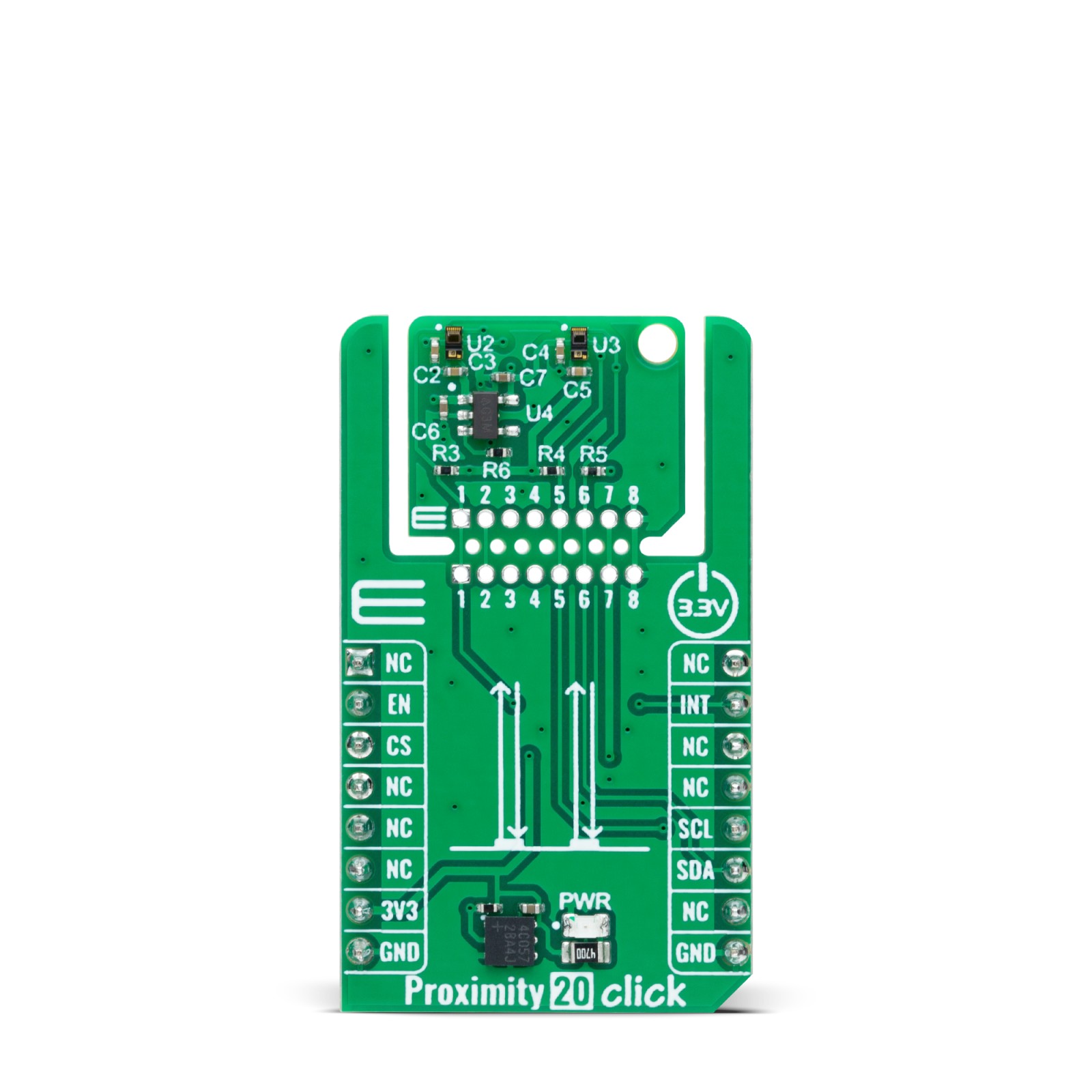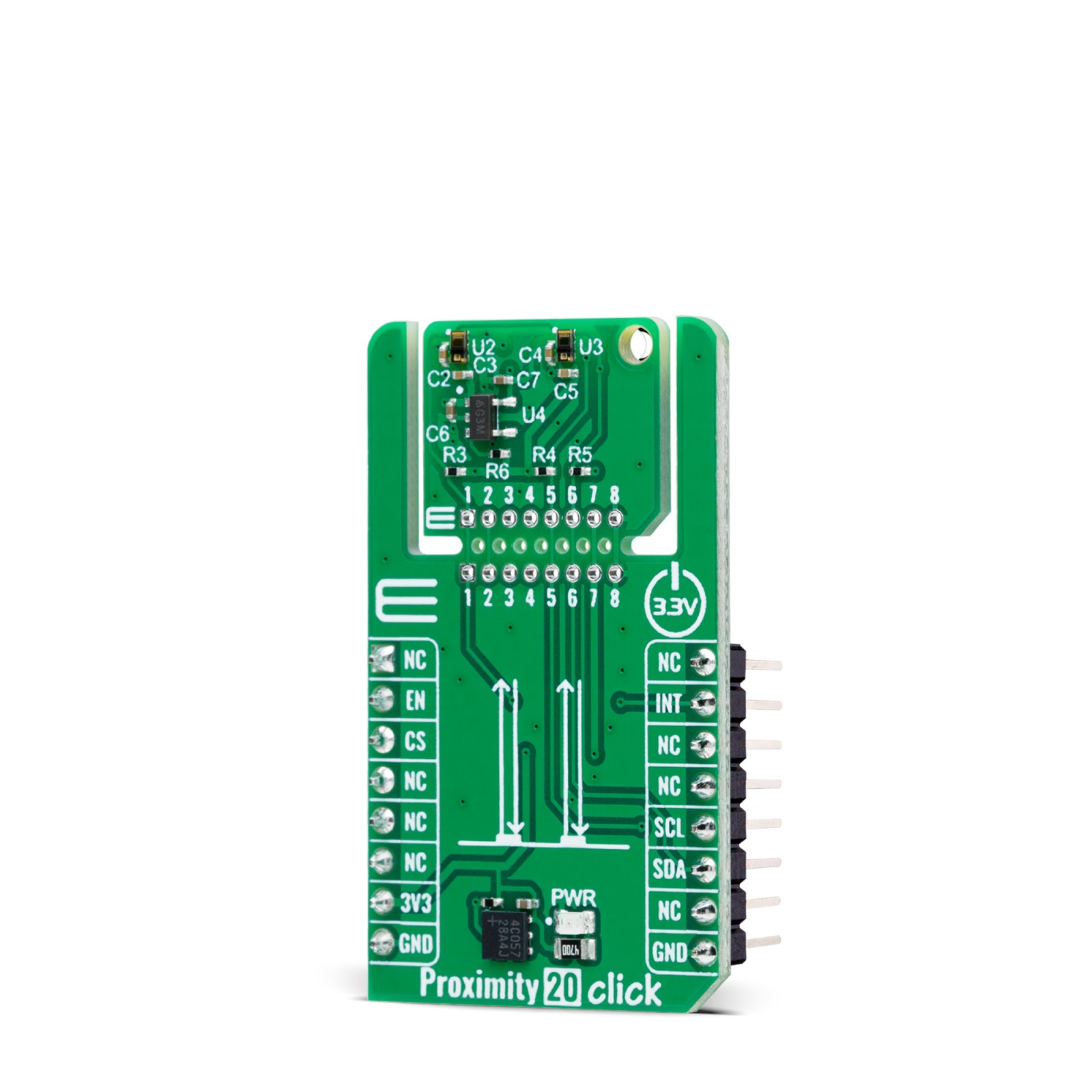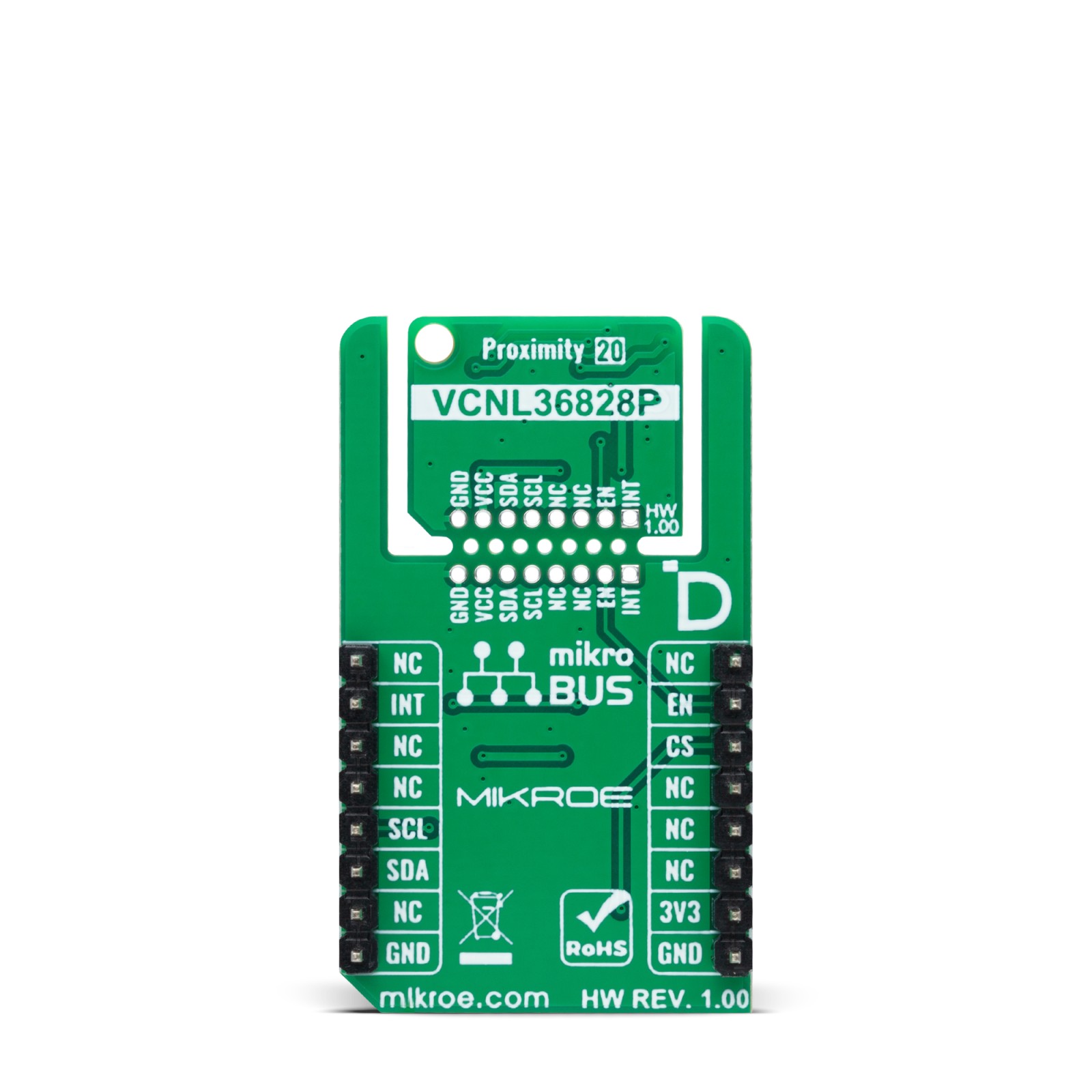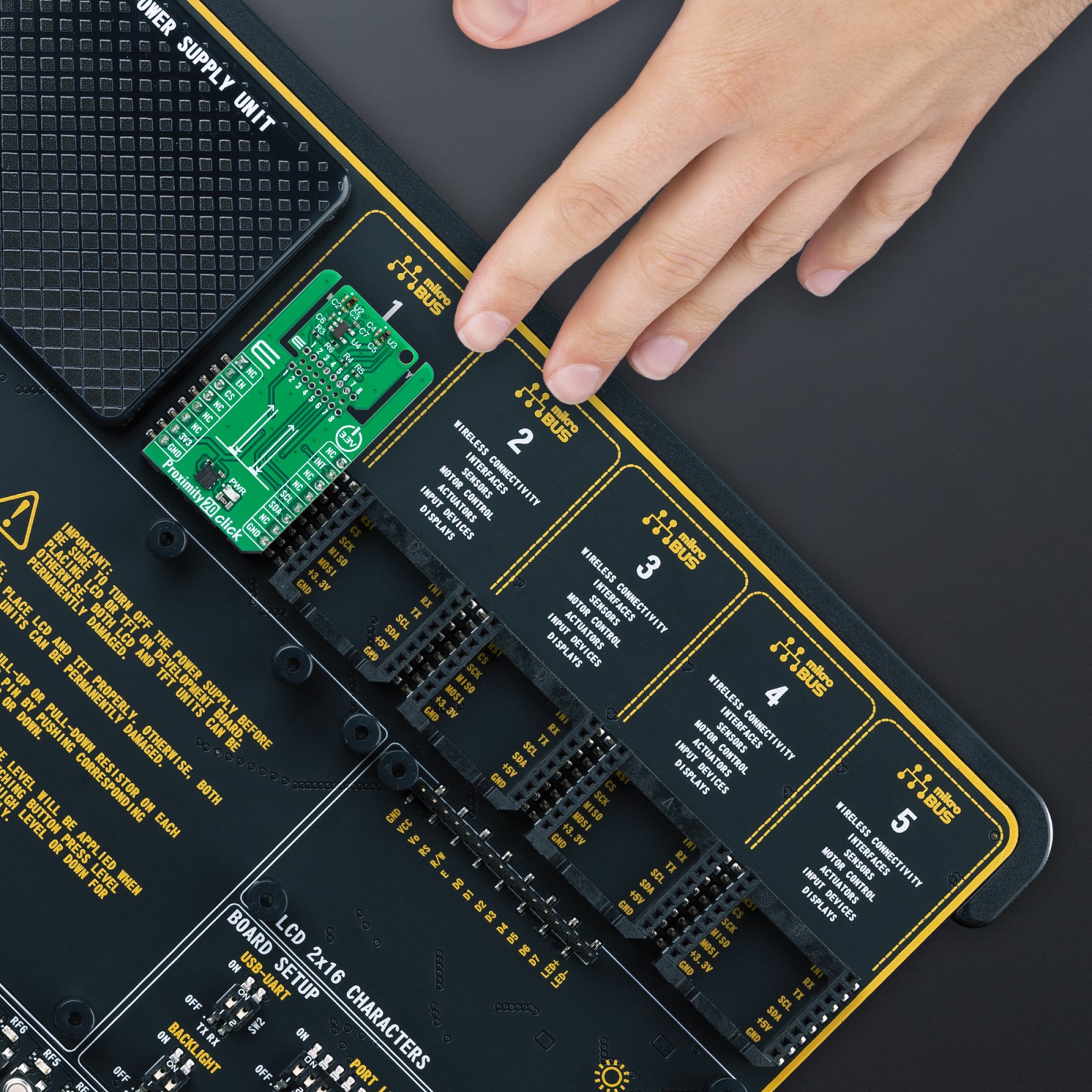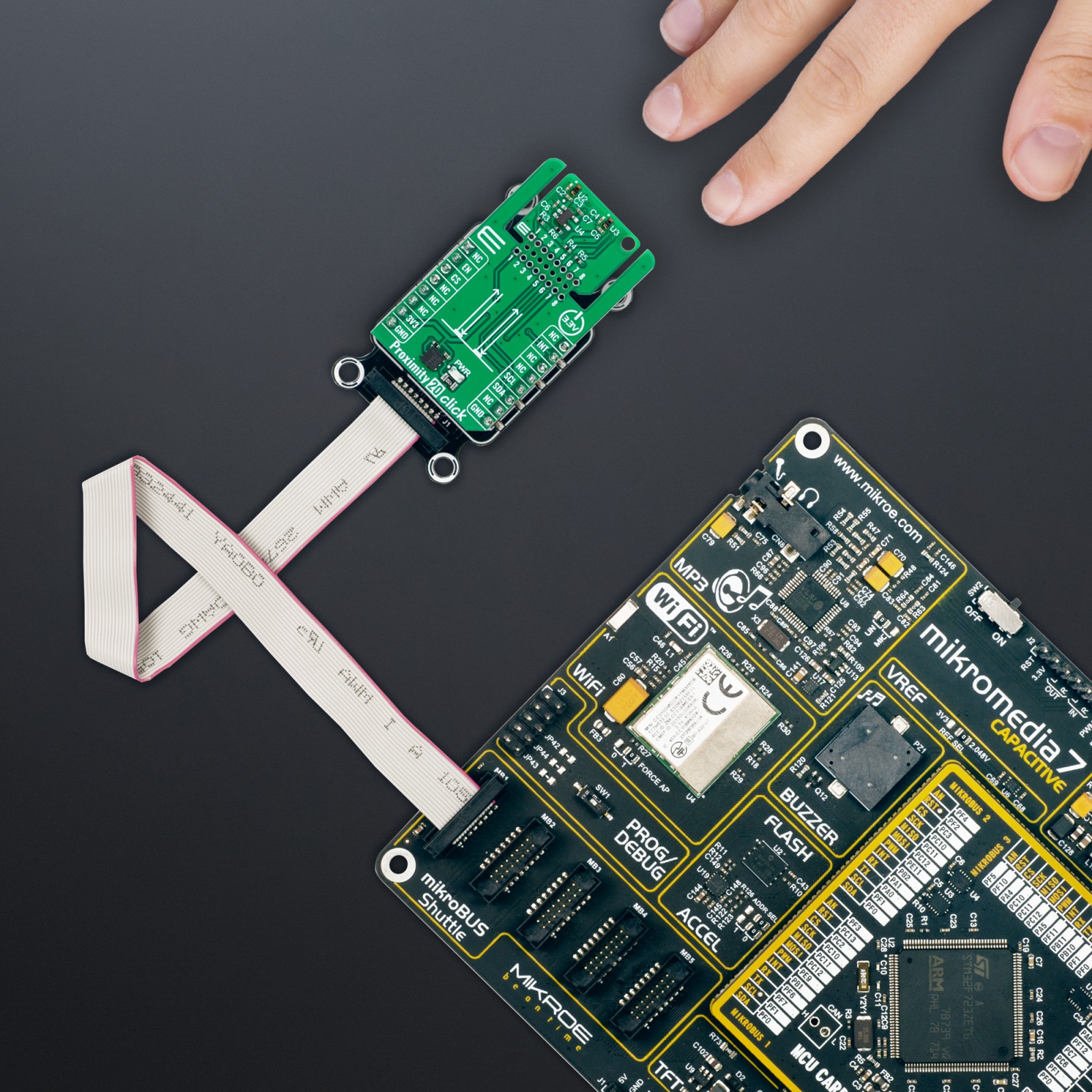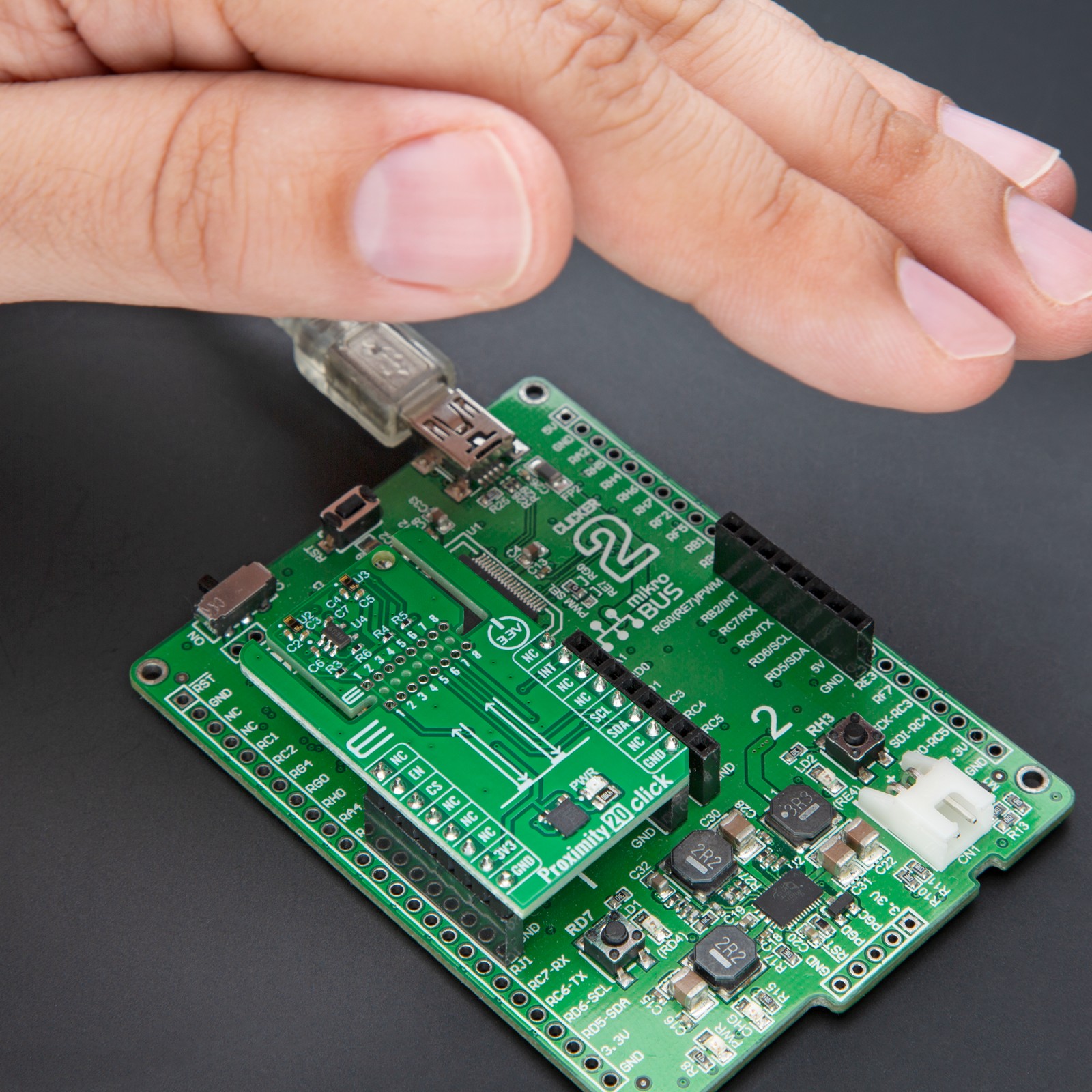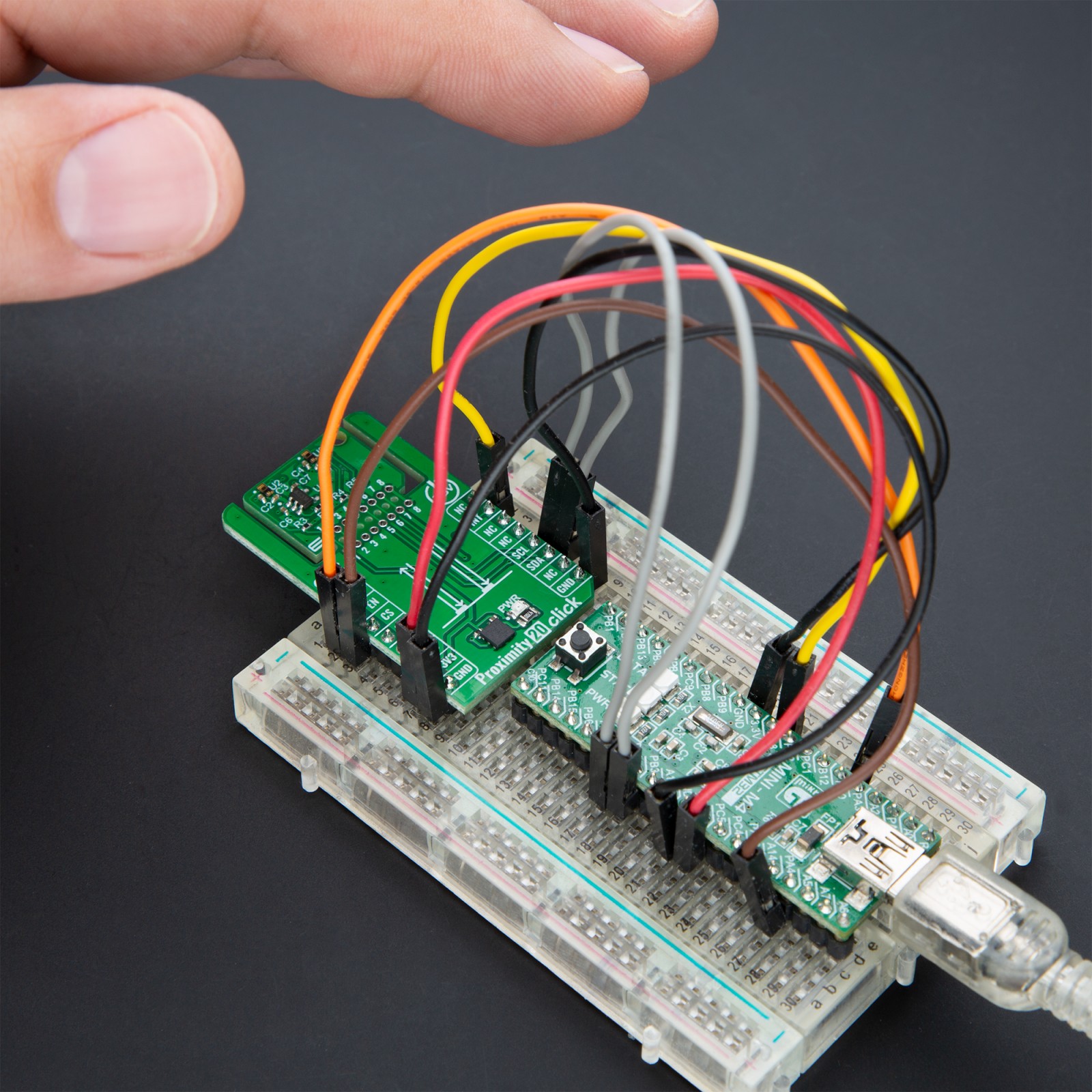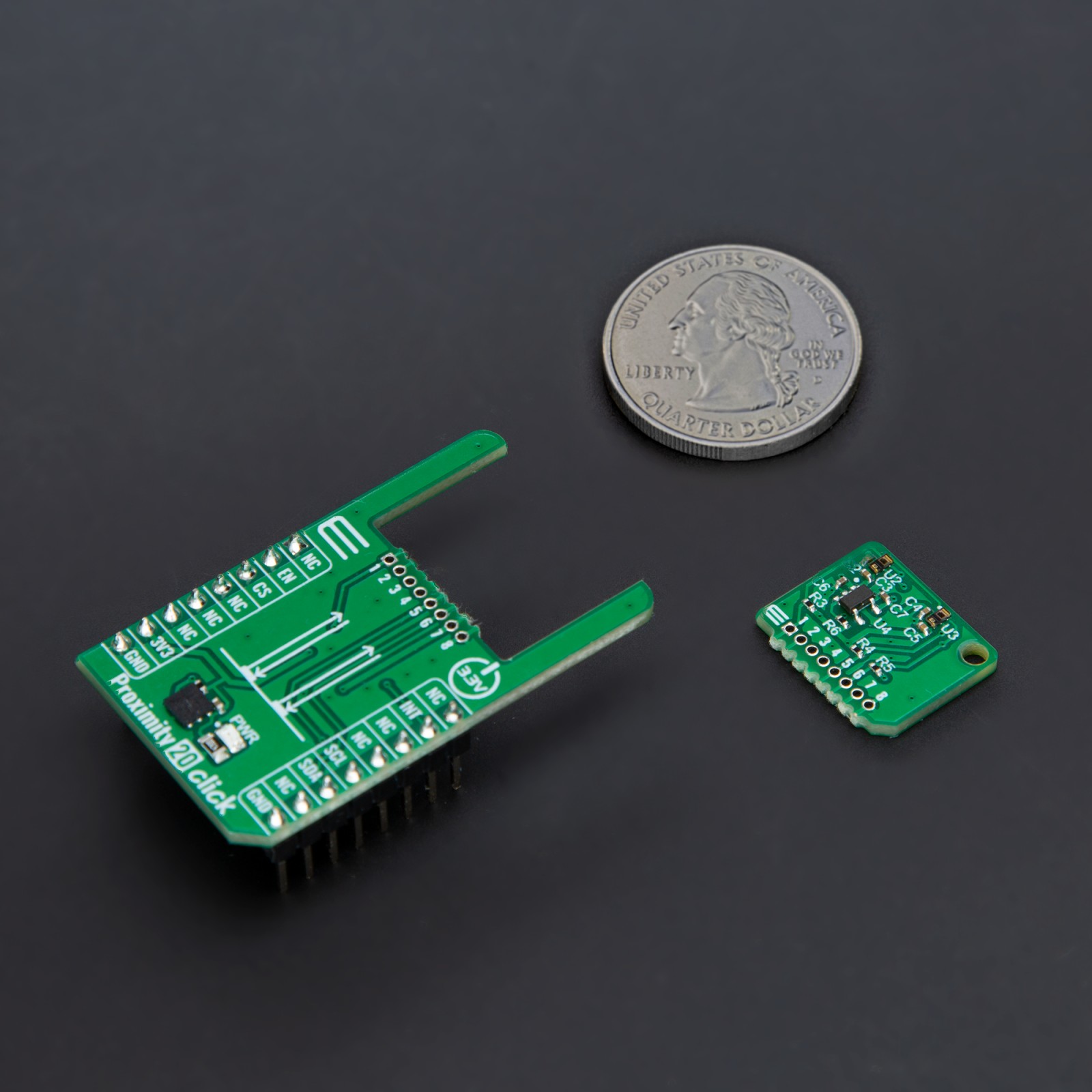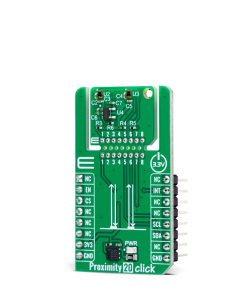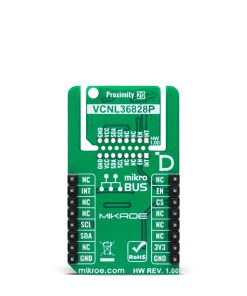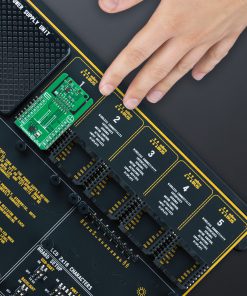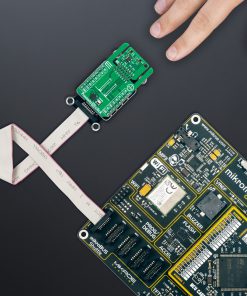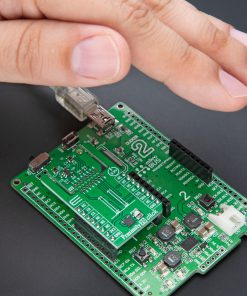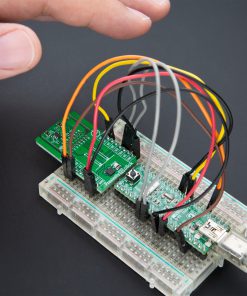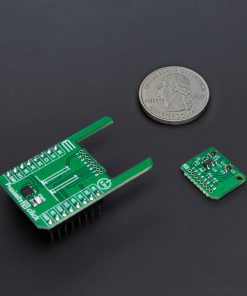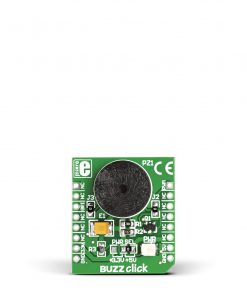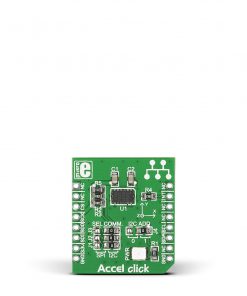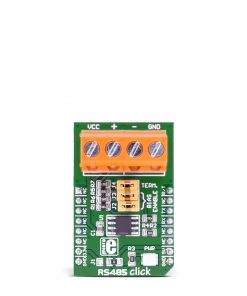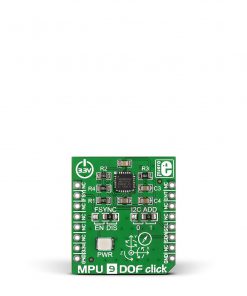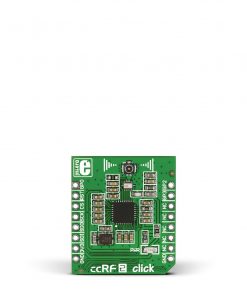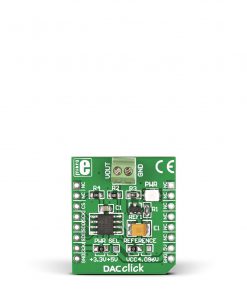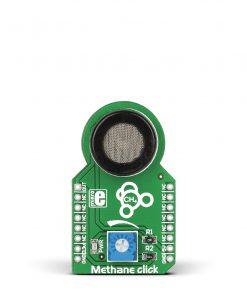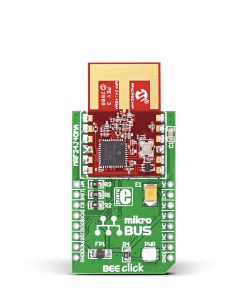Proximity 20 Click
R335.00 ex. VAT
Proximity 20 Click is a compact add-on board for short-range proximity sensing applications up to 200mm. This board features two VCNL36828P proximity sensors from Vishay Semiconductor. Key features include a 940nm VCSEL for immunity to a red glow, intelligent cancellation technology to minimize crosstalk, and a smart persistence scheme for reduced measurement response time. The board supports I2C communication, operates with a 3.3V logic voltage level, and includes the Click Snap feature for flexible implementation. It is ideal for applications such as gesture recognition, object detection, and proximity sensing in consumer electronics.
Proximity 20 Click is fully compatible with the mikroBUS™ socket and can be used on any host system supporting the mikroBUS™ standard. It comes with the mikroSDK open-source libraries, offering unparalleled flexibility for evaluation and customization. What sets this Click board™ apart is the groundbreaking ClickID feature, enabling your host system to seamlessly and automatically detect and identify this add-on board, alongside a Click Snap feature introducing a new level of flexibility and ease of use.
Stock: Lead-time applicable.
| 5+ | R318.25 |
| 10+ | R301.50 |
| 15+ | R284.75 |
| 20+ | R274.03 |

